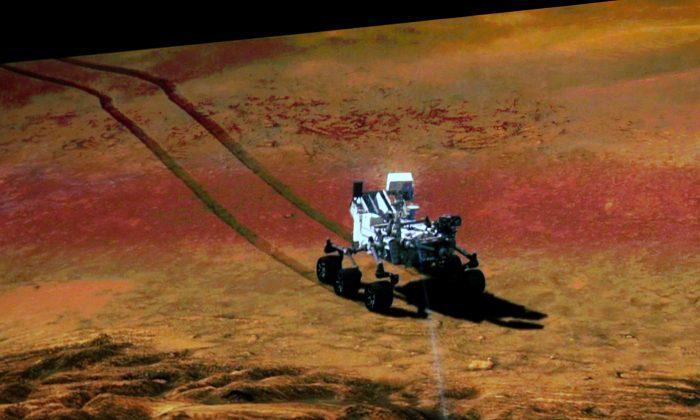Scientific accuracy runs in the blood of the novel’s author, Andy Weir, who was the child of a particle physicist and an electrical engineer. Weir had no intentions of writing a best-seller at the start, and instead concentrated on getting the details right.
But for the premise of the story to work, Weir had to introduce several elements that don’t exist in reality, and laid out his workarounds in a Q&A on the popular discussion board Reddit, where earnest fans grilled him on miscellaneous details in his novel.
The story of “The Martian” revolves around NASA’s Mark Watney trying to survive on the red planet after he gets cut off from the rest of his crew in the middle of a dust storm. One fan asked Weir if such withering storms were possible on Mars.
“No. Mars’s atmosphere is too thin. This was a deliberate concession to drama that I made because it’s a man-versus-nature story and I wanted nature to get the first punch in,” Weir replied.
“Even if you were stood right in the middle of a dust devil, you‘d feel roughly the same strength of wind blowing past you that you’d feel on a gentle cycle ride on a calm day,” Robert Walker, a programmer and inventor, wrote on Quora.
Once stranded on Mars, Watney makes his way toward the Schiaparelli crater, where another manned mission will arrive in four years. Spending that much time on the planet would expose him to a dangerous, and probably fatal, amount of cosmic rays, if not for his handy (and fictional) radiation blocker.
“The book has a completely fictional material that blocks radiation. No such thin, flexible, light radiation shielding exists in the real world,” Weir told the AMA audience.
There were also inaccuracies that Weir didn’t plan on. On Mars, Watney mixes hydrazine, a toxic substance usually handled by people in hazmat suits, and oxygen to make drinking water. The admixture also produces ammonia, which as one fan points out, “isn’t very healthy either.”
“Yes, very toxic. I didn’t know that at the time. Had I known, I would have had him wear his EVA suit during the process,” Weir replied.
But Weir doesn’t mind these minor blemishes; relative to other science fiction novels, his book is as real as they come.
“I’m not worried about my work coming under the eye of experts. It’s a work of fiction, and it’s going to have inaccuracies. That’s just how it is,” Weir wrote. “Getting a thumbs up from those experts and hearing them say ‘It’s more accurate than anything else in the field’ is a good feeling.”






